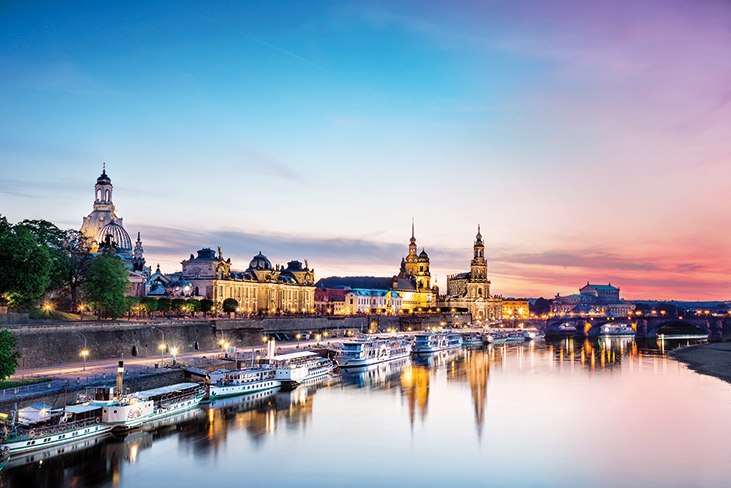
About Dresden
Dresden is the capital city of the Federal State of Saxony in Germany. It is situated in a valley on the river Elbe, near the Czech border. It extends across 328 square kilometers and has approximately 530,000 residents. Dresden is perfectly linked with the international transit network, and can be reached from every direction by rail, car or air. In terms of geographical size, Dresden is Germany’s fourth-largest city after Berlin, Hamburg and Cologne.
Dresden has a long history as the capital and royal residence for the electors and kings of Saxony, who for centuries furnished the city with cultural and artistic splendor. The city was known as the Jewel Box, because of its baroque and rococo city center. The controversial British and American bombing of Dresden in World War II towards the end of the war killed approximately 25,000, many of whom were civilians, and destroyed the entire city center. The bombing gutted the city, as it did for other major German cities. After the war restoration work has helped to reconstruct parts of the historic inner city, including the Katholische Hofkirche, the Semper Oper and the Dresdner Frauenkirche as well as the suburbs.
Before and since German reunification in 1990, Dresden was and is a cultural, educational, political and economic center of Germany and Europe. The Dresden University of Technology is one of the 10 largest universities in Germany and part of the German Universities Excellence Initiative. Read more…
| Useful links and recommendations |
| Official Tourist Information Center |
| Sightseeing tours |
| Green Vault – one of the richest treasure chambers in Europe |
| Semper Opera |
Organizers

German Social Accident Insurance (DGUV)
Glinkastraße 40
D-10117 Berlin
Germany
Federal Institute for Occupational Safety and Health (BAuA)
Friedrich-Henkel-Weg 1-25
D-44149 Dortmund
Germany
Registration

Invited are representatives of G7 occupational safety and health institutions as well as scientific and research organizations which deal with the occupational safety and health dimension of new climate change-related challenges.
